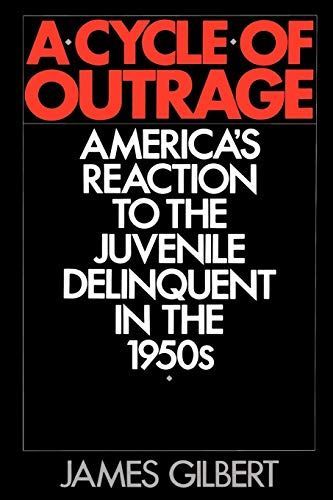
A Cycle of Outrage America's Reaction to the Juvenile Delinquent in the 1950s
The youth culture is on everyone's lips today, as pressures build to ban controversial song lyrics, reintroduce school prayer, and prohibit teenagers' access to contraceptives. It's not the first time Americans have been outraged over the seuction of the innocent.. When James Dean and Marlon Brando donned their motorcycle jackets and adopted alienated poses in Rebel Without a Cause, East of Eden, and The Wild One, in the 1950's, so did countless numbers of American teenagers. Or so it seemed to their parents. American teenagers were looking and acting like juvenile delinquents. By mid-decade, the nation had reached a pitch of near obsession with the harmful effects of film, radio, comic books, and television on American youth. Experts across the land denounced mass culture as depriving young people of their innocence and weakening their parents' hold on them. By the end of the decade, the obsession had ended, although the actual numbers of juvenile delinquents had apparently risen. A Cycle of Outrage explores the 1950's debate over the media and juvenile delinquency among parents, professionals, and the creators of mass culture themselves. In this groundbreaking study, James Gilbert sees the attempt to blame the media as part of a larger reaction of discomfort echoed in recent debates over censorship. The book examines how the central phenomena of the 1950's--the development of youth culture and the rise of a mass media society--became intertwined and confused and argues that young people ceased to be a threat as they were recognized to be a market.